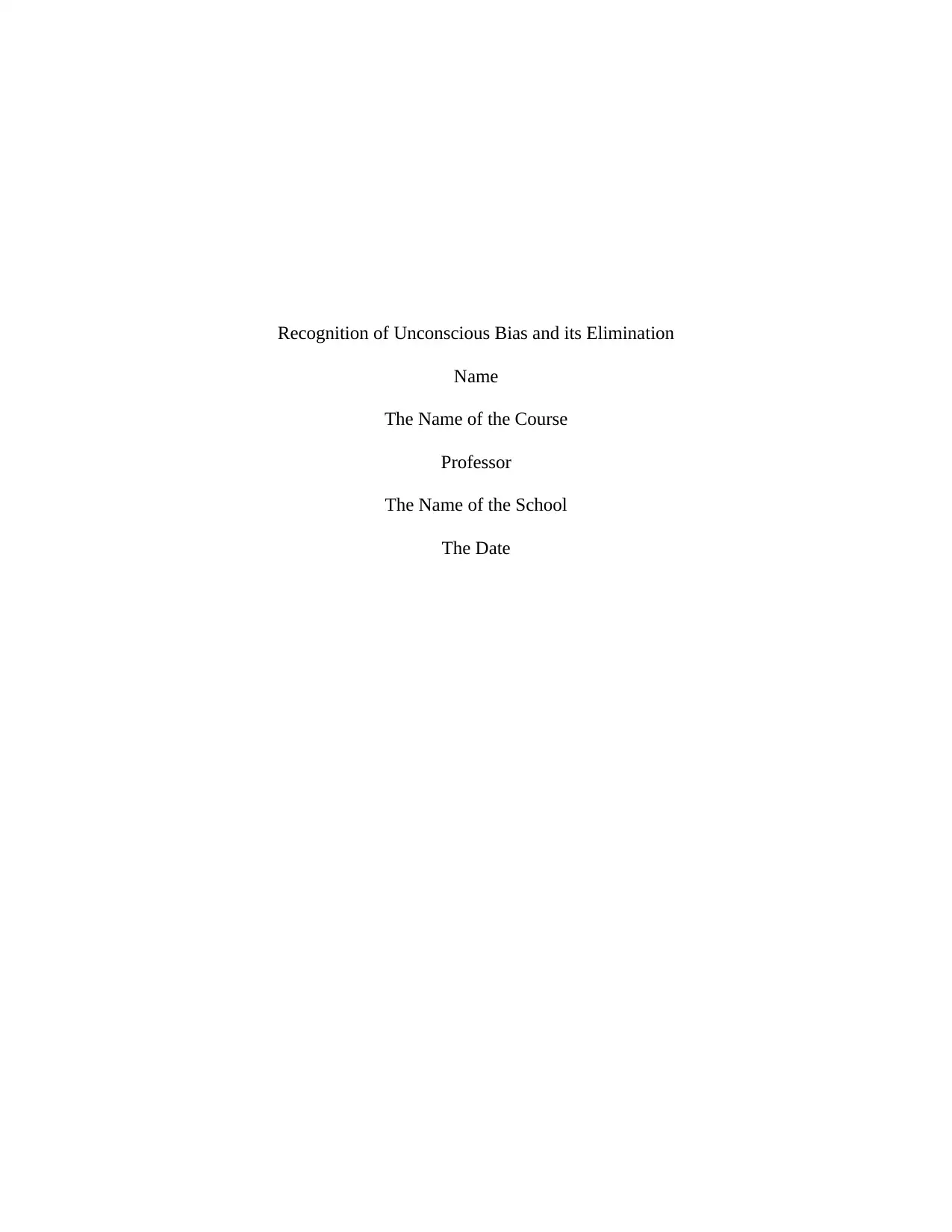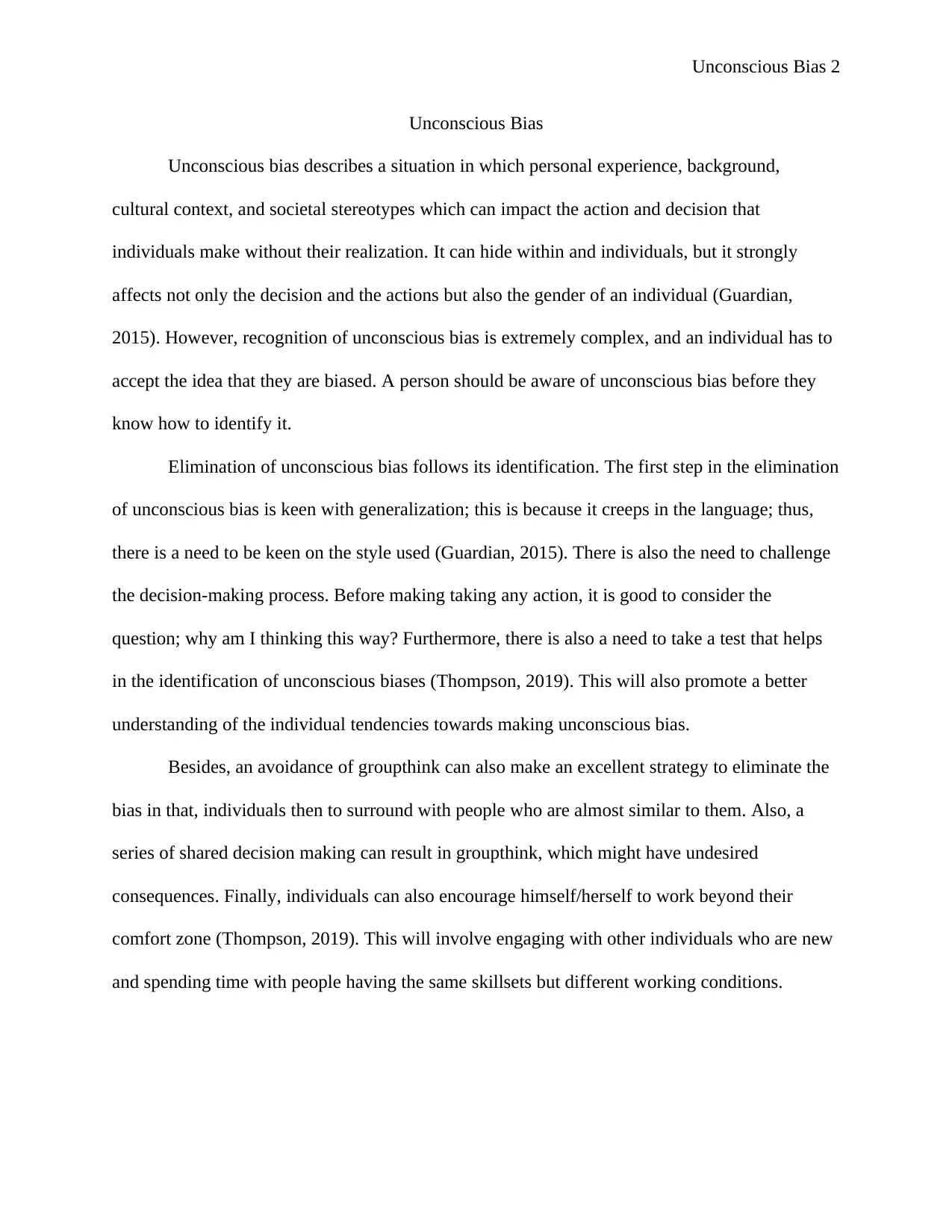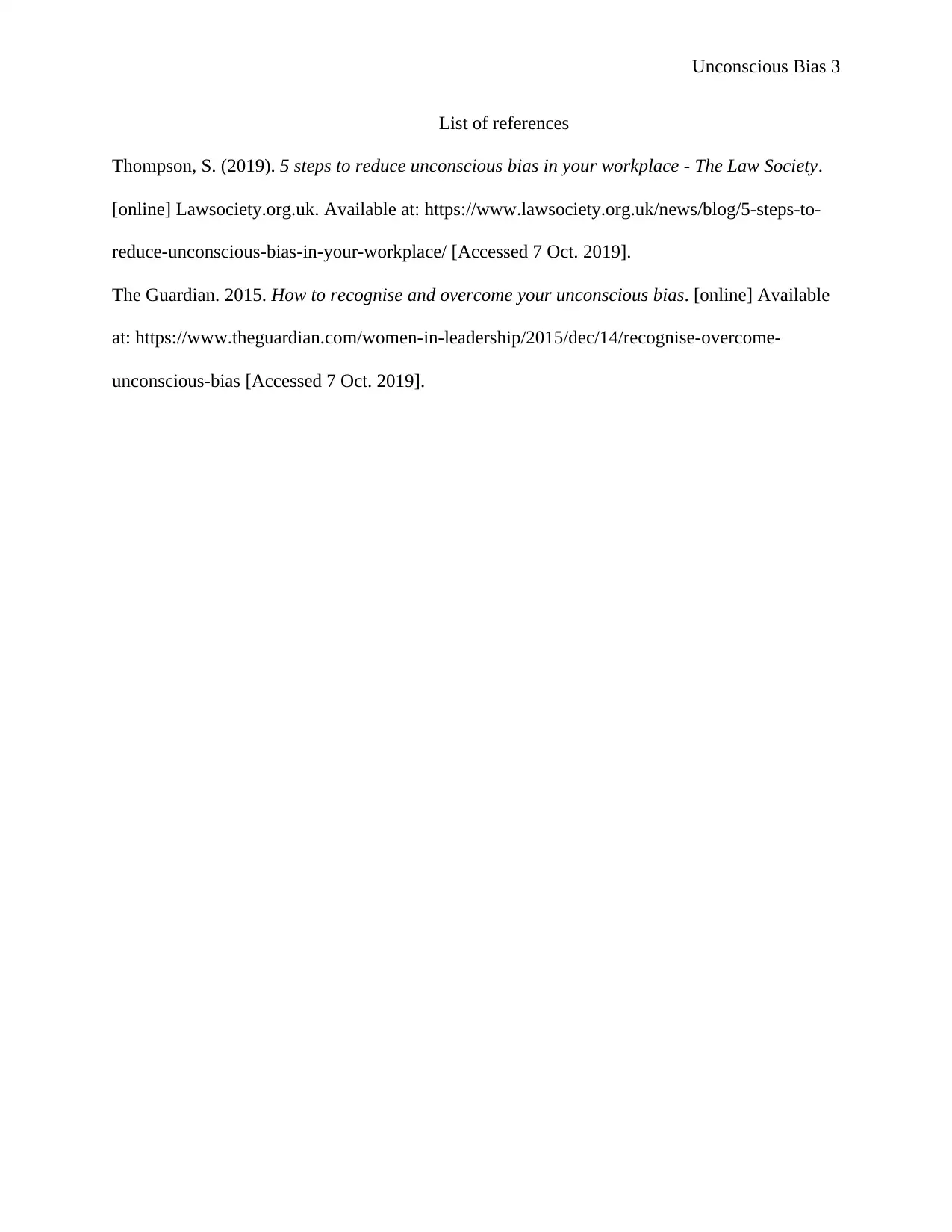Unconscious Bias Report: Identification, Analysis, and Solutions
VerifiedAdded on 2022/09/30
|3
|417
|1
Report
AI Summary
This report delves into the concept of unconscious bias, examining how it influences individual actions and decisions, often stemming from personal experiences, cultural contexts, and societal stereotypes. The report highlights the importance of recognizing unconscious bias before attempting to address it, emphasizing the complexities of self-awareness. It outlines practical strategies for eliminating bias, including careful attention to language, challenging the decision-making process, and utilizing tests to identify personal biases. Furthermore, the report suggests avoiding groupthink, promoting diverse interactions, and encouraging individuals to step outside their comfort zones as effective methods for mitigating unconscious bias. The report references sources such as The Guardian and The Law Society to support its claims, providing a foundation for understanding and addressing this critical issue.
1 out of 3










![[object Object]](/_next/static/media/star-bottom.7253800d.svg)